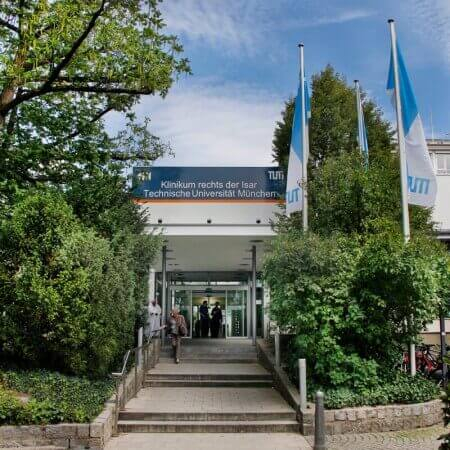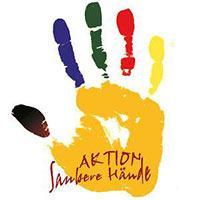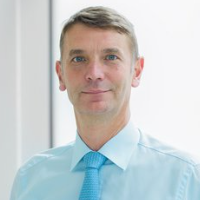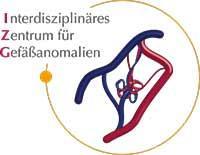Neuroendocrine Tumor (NET) of the Lung — Embolization or Chemoembolization: treatment in the Best Hospitals in the World
Treatment prices are regulated by national law of the corresponding countries, but can also include additional hospital coefficients. In order to receive the individual cost calculation, please send us the request and medical records.

Department of Interventional Radiology
The Department of Interventional Radiology offers the full range of imaging examinations, as well as innovative image-guided minimally invasive techniques for the treatment of tumors, vascular diseases and internal pathologies (for example, CT, MRI, PET-CT, SPECT). The department's doctors have deep knowledge and colossal experience in the field of interventional radiological methods of treatment, which represent an excellent alternative to open surgical interventions. Despite the high level of technical equipment and the presence of advanced computerized systems, the focus is always on the person with his individual needs. Compliance with current clinical protocols and high professionalism of the department's specialists contribute to the successful clinical practice, as well as the reputability of the department among the best medical facilities of this kind in Germany.




Department of Interventional Radiology and Neuroradiology
The Department of Interventional Radiology and Neuroradiology offers a full range of advanced imaging diagnostics and minimally invasive treatments on both an inpatient and outpatient basis. The department has state-of-the-art medical equipment for imaging tests such as X-ray, computed tomography, magnetic resonance imaging, digital subtraction angiography, and mammography. The medical facility also performs many highly effective interventional therapeutic procedures under image guidance, which in many cases allow patients to avoid traumatic open surgery. For example, the department successfully performs local fibrinolysis, thrombectomy, percutaneous transluminal angioplasty, hemostasis, transarterial chemoembolization, uterine artery embolization, and other procedures. The department's neuroradiologists specialize in brain and spinal cord imaging and the treatment of central nervous system disorders. Interventional neuroradiology focuses on the treatment of carotid artery stenosis, brain aneurysms, arteriovenous malformations, dural fistulas, subdural hematomas, brain tumors, skull base and spinal tumors, and chronic back pain. The department's medical team has extensive clinical experience in their areas of expertise. The specialists are guided by the recommendations of the German Society for Interventional Radiology and Minimally Invasive Therapy (DeGIR) and the German Society for Neuroradiology (DGNR), which helps to achieve the best results.






Department of Adult and Pediatric Diagnostic, Interventional Radiology, Neuroradiology
The Department of Adult and Pediatric Diagnostic, Interventional Radiology, Neuroradiology is one of the best institutions of its kind in Germany and offers patients the full range of radiological studies and imaging-guided minimally invasive therapy. The department’s scope of tasks also includes imaging diagnostics in children of all age groups, detection and invasive treatment of cerebral vascular pathology (neuroradiology). Patient care is provided both on an inpatient and outpatient basis.






Neuroendocrine tumors (NETs) are a group of benign and malignant neoplasms that develop from hormone-producing cells. They most often develop in the organs of the digestive tract. In the second place are the organs of the bronchopulmonary system. They account for approximately 27% of all neuroendocrine tumors. Basically, these neoplasms can be removed with surgery, but other treatment methods are also often used, including embolization and chemoembolization of the bronchial arteries.
Content
- What are embolization and chemoembolization
- What are the types of neuroendocrine lung tumors
- In what cases can embolization be used
- Embolization for unresectable cancer
- Embolization to prepare for surgery
- Embolization to stop bleeding
- Hepatic artery embolization
- Why is it worth going abroad?
- Treatment in Europe with Booking Health at an affordable price
What are embolization and chemoembolization
Embolization is one of the treatment methods for neuroendocrine lung tumors. Its essence consists in closing the lumen of the bronchial artery, less often other vessels feeding the neoplasm. As a result, cancer cells do not receive oxygen and die.
Embolization is often combined with regional chemotherapy for the treatment of patients with neuroendocrine tumors. Doctors inject drugs into the pulmonary artery, which accumulate in large quantities in the tumor. With fewer side effects, such chemotherapy is more effective than systemic cytostatic therapy.
The main treatment options are oily chemoembolization and the use of drug-eluting microspheres. The clinical effect of such treatment is provided by three mechanisms: cessation of blood flow in the tumor, suppression of cancer cells by cytostatics and stimulation of antitumor immunity, which occurs due to the production of tumor necrosis factor alpha by immune cells.
Chemoembolization has the following benefits:
- Minimal invasion – the doctor makes only a small skin incision in the patient's leg to insert a catheter into the vessels.
- Low risk of complications.
- Possibility of stopping pulmonary haemorrhage in patients with end-stage disease.
- Procedure is applicable even in debilitated patients with concomitant diseases.
- Good tolerance of treatment by most patients.
- After therapy, the patient does not need long-term rehabilitation.
However, the method also has its disadvantages. The main one is that the arterial network in the lungs is arranged differently in different patients, and the tumor can receive blood from different sources. In this regard, in patients in whom the neuroendocrine neoplasm has multiple sources of blood supply, the procedure is not applied at all or its results are worse. The best response to treatment can be achieved in patients in whom the tumor receives blood from one bronchial artery. It is important that it does not have direct communication with other large vessels that deliver blood to the neighboring organs and tissues.
What are the types of neuroendocrine lung tumors
According to the 2015 WHO classification, which is approved by the European Neuroendocrine Tumor Society (ENETS), there are four types of lung tumors:
- Typical carcinoid.
- Atypical carcinoid tumor.
- Carcinoid large cell lung cancer.
- Small cell lung cancer (the most common variant).
Previously, all neuroendocrine tumors were called carcinoids. In new classifications, this term remains, but now it is used only in relation to highly differentiated (low grade) neoplasms. In carcinoids – typical and atypical – the prognosis is better than in small and large cell lung cancers.
Carcinoid accounts for 2% of lung tumors. These include only neoplasms with a diameter greater than 0.5 cm. For smaller neoplasms, the term tumourlets or nodular proliferation of neuroendocrine cells is used.
Typical and atypical carcinoids differ little from each other. In fact, this is the same tumor, but an atypical carcinoid grade is slightly higher: cells divide faster, areas of necrosis (tissue death) appear. Typically, these tumors develop in the large bronchi. They occur earlier than lung cancer – at 45-55 years of age. Even the development of tumors in children is possible. Carcinoids are not associated with smoking.
In 70% of cases, typical carcinoid tumors are detected at stage 1. Five-year survival rate is high. Depending on the stage of the neuroendocrine tumor, it reaches 80-100%. But even these conventionally benign tumors can sometimes metastasize. Lymph node metastases are found in 15% of patients. In the presence of such metastases, the five-year survival rate is 80%, and the ten-year survival rate makes up 65%.
With atypical carcinoids, the prognosis is worse because these neuroendocrine tumors are more aggressive. The likelihood of metastasis to the lymph nodes is 45%. Depending on the stage, the five-year survival rates are 25-80%. In the presence of metastases in the lymph nodes, the five-year survival rate of patients is 60%, and the ten-year survival rate makes up 25%.
The poorly differentiated, most dangerous, and at the same time the most frequent neuroendocrine tumors (NETs) of the lungs include small cell and large cell neuroendocrine cancer.
Large cell neuroendocrine tumors account for 3% of all lung cancers. This is a very dangerous disease, and the prognosis for patients is worse than for "normal" non-small cell lung cancer. The five-year survival rate averages 30%. Basically, neoplasms grow from small bronchi (peripheral cancer). Most cases of the disease develop due to smoking.
Small cell neuroendocrine cancer accounts for 10% of lung tumors. It is the most common and most aggressive neuroendocrine tumor. At the time of diagnosis, two-thirds of patients already have metastases in the brain, liver, bones, adrenal glands. Most patients have massive metastatic foci in the bronchopulmonary and mediastinal lymph nodes.
In what cases can embolization be used
In the treatment of patients with neuroendocrine lung tumors, arterial embolization can rarely be used. The main method of treating the disease is surgical. Doctors remove part of the lung along with the tumor. The scope of the surgical procedure depends on the size of the neoplasm, its location and grade. The following types of surgical procedures can be used:
- Atypical resection of the lung or segmentectomy – removal of a small part of the lung, used for small neuroendocrine tumors with low grade.
- Bronchial sleeve resection – a bronchus is crossed in front of the tumor and behind the tumor, this part of the bronchus is removed, and its ends are sutured;
- Lobectomy – removal of a lobe of the lung (in a person, the left lung consists of two lobes, the right one has three lobes).
- Bilobectomy – removal of two lobes of the lung.
- Pneumonectomy – removal of the entire lung.
Whenever possible, preference is given to organ-preserving operations. After removal of the malignant tumor, drug therapy and radiation therapy may be required. In the advanced stages, targeted therapy and radionuclide therapy can be used as well.
Embolization is not considered the main treatment for neuroendocrine tumors of the lung. It can be used in the following cases:
- Inoperable cancer, contraindications to surgery or refusal from it.
- Preparation for surgery in order to reduce the scope of the surgical intervention.
- With pulmonary bleeding in the end-stage of cancer.
Embolization for unresectable cancer
Many malignant neuroendocrine tumors of the lung cannot be removed with surgical techniques. They have reached large sizes, spread to the surrounding tissues, or gave distant metastases. In such cases, embolization can be used. The possible results of this procedure can be as follows:
- Tumor reaches a resectable state, and in this case it can be removed.
- Reduction of the size of the neoplasm, stabilization of its size, increase in the patient's life expectancy.
In most cases, the blood supply to the tumor is the bronchial arteries. To close their lumen, doctors perform oily chemoembolization with a lipiodol solution with chemotherapy drugs or inject drug-eluting microspheres into the arteries.
Embolization to prepare for surgery
In many patients, the neuroendocrine tumor can be removed completely. Nonetheless, it is important to do this with minimal trauma in order to preserve as much lung tissue as possible. Transarterial chemoembolization of the bronchial artery helps to reduce the size of the tumor. As a result, the doctor can:
- Remove less lung tissue – for example, perform a lobectomy instead of a pneumonectomy (remove a lobe of the lung instead of the entire lung).
- Use a less traumatic surgical approach – remove the tumor using videothoracoscopy or robot-assisted surgery instead of the classic open chest surgery.
As the blood flow to the tumor decreases, the patient loses less blood during the surgery. He has less need for hemotransfusion (blood transfusion) and feels better after surgery.
During surgery, the risk of dissemination of cancer cells is reduced. Therefore, the risk of neuroendocrine tumor recurrence after combination treatment is reduced.
Embolization to stop bleeding
Hemostatic therapy for patients with lung cancer is of great importance. Many of them suffer from hemoptysis. The development of massive pulmonary bleeding is possible.
Endoscopic vascular coagulation and drug therapy are usually used to stop them. However, these methods are not always effective. In such cases, doctors resort to transarterial vascular embolization.
Their lumen is closed with embolism: it can be polyvinyl chloride particles, a hemostatic sponge, alcohols, adhesive compositions, spirals. In case of end-stage cancer, embolization may not be complemented by regional chemotherapy.
Hepatic artery embolization
Neuroendocrine tumors can spread distant metastases. They can be controlled with different methods. For example, doctors usually use radiation therapy for metastatic lesions in the brain and bones. Hepatic artery chemoembolization is often used to combat liver metastases.
It gives good results: not only relieves symptoms, but also increases patient survival. The procedure is especially useful for those who manage to achieve control of the primary tumor: for example, it has been removed by surgery, destroyed by embolization or ablation.
The hepatic artery supplies 90% of cancer metastases with blood, but the healthy parenchyma of the liver receives only 25% of the blood from it. The main source of its blood supply is the portal vein. Therefore, after closing the lumen of the hepatic artery, metastases of a neuroendocrine tumor suffer much more strongly than a healthy parenchyma.
For the treatment of the disease, transarterial oily chemoembolization or drug-eluting microspheres are most often used. The procedure is safe for health. This therapy shrinks the tumor. Transarterial embolization can be used multiple times as needed to control cancer.
Why is it worth going abroad?
Many cancer patients choose to undergo therapy abroad. In different countries, the level of development of medicine is very diverse. The patients in Europe regularly undergo transarterial chemoembolization, so you can count on the therapy to be not only successful, but also safe for your health. There are several reasons why it is worth undergoing treatment for a disease abroad. These are as follows:
- Extensive experience in the use of bronchial arterial embolization for the treatment of patients with lung tumors.
- High-precision diagnostics allows doctors to perfectly assess the condition of the blood vessels and the type of blood supply to the neoplasm, which is important not only for the success of therapy, but also for its safety.
- Low risk of complications from endovascular therapy.
- Minimum length of the patient's hospital stay.
- Endovascular treatment can be successfully combined with surgery, radiation therapy, targeted therapy, immunotherapy and other methods.
Doctors in Europe are achieving excellent results in the treatment of lung cancer. Even patients with malignant tumors can be successfully cured. If it is impossible to perform radical treatment, then therapy provided aims to increase the patient's life expectancy. It is as safe as possible for health. The treatment abroad allows not only to achieve control of oncopathology, but also to relieve symptoms and prevent dangerous complications.
Treatment in Europe with Booking Health at an affordable price
To undergo treatment in one of the European hospitals, please use the services of the Booking Health company. On ourwebsite, you can see the cost of treatment in different hospitals, compare prices and book a medical care program at a favorable price. Transarterial embolization in European hospitals will be easier and faster for you, and the cost of treatment will be lower.
Please leave your request on our website. Our employee will contact you and advise you about the treatment in Europe. Booking Health will take care of the organization of your trip. We will provide the following benefits for you:
- We will choose a hospital for treatment in Europe, whose doctors specialize in the treatment of neuroendocrine tumors of the lung.
- We will help you overcome the language barrier, establish communication with your attending physician.
- We will reduce the waiting time for the start of the medical care program and book a doctor's appointment on the most suitable dates.
- We will reduce the price. The cost of treatment in European hospitals will be lower due to the lack of additional coefficients for foreign patients.
- We will take care of all organizational issues: documents for entering the country, transfer from the airport, hotel, interpreting services, etc.
- We will prepare a program and translate medical documents. You do not have to repeat the previously performed diagnostic procedures.
- We will provide communication with the hospital after treatment in Europe.
- We will organize additional diagnostic examinations and treatment in European hospitals, if necessary.
- We will buy medicines abroad and forward them to your native country.
- We will help you keep in touch with the hospital and the doctor after treatment in Europe.
You will receive treatment from the best doctors in the world. The Booking Health employees will help reduce the cost of treatment and solve all organizational issues, and you will only have to focus on restoring your health.
Authors: Dr. Vadim Zhiliuk, Dr. Sergey Pashchenko

